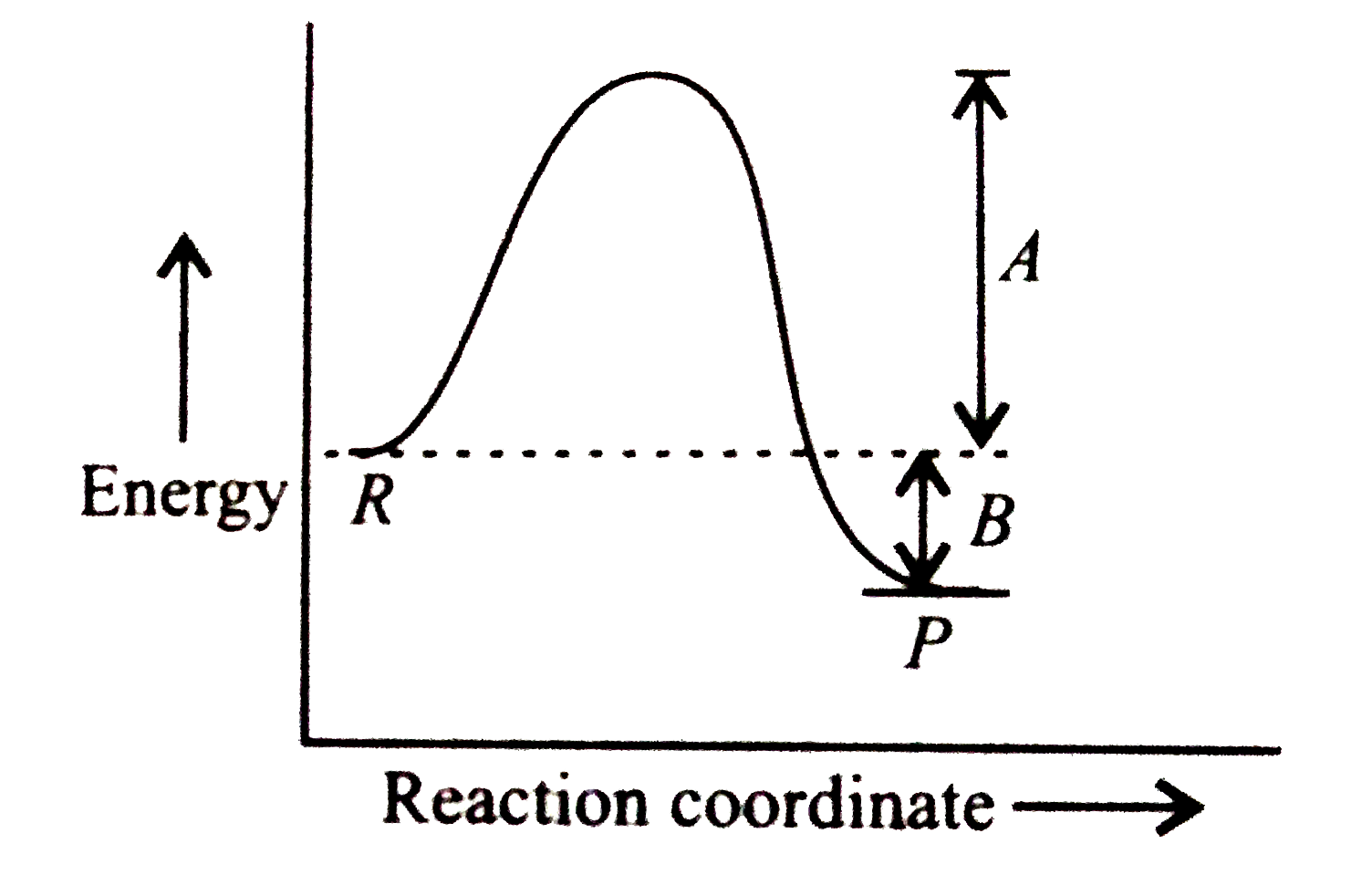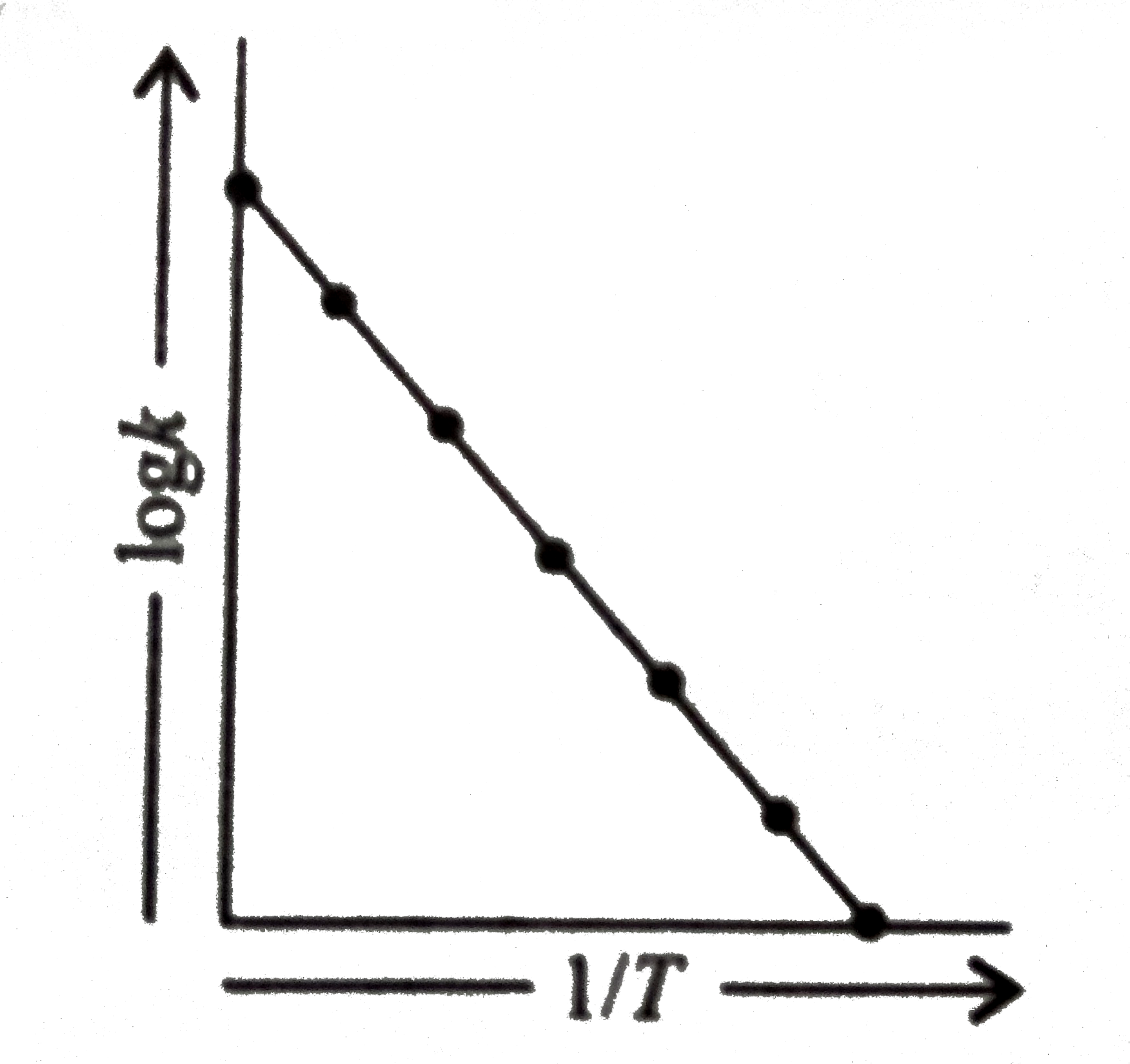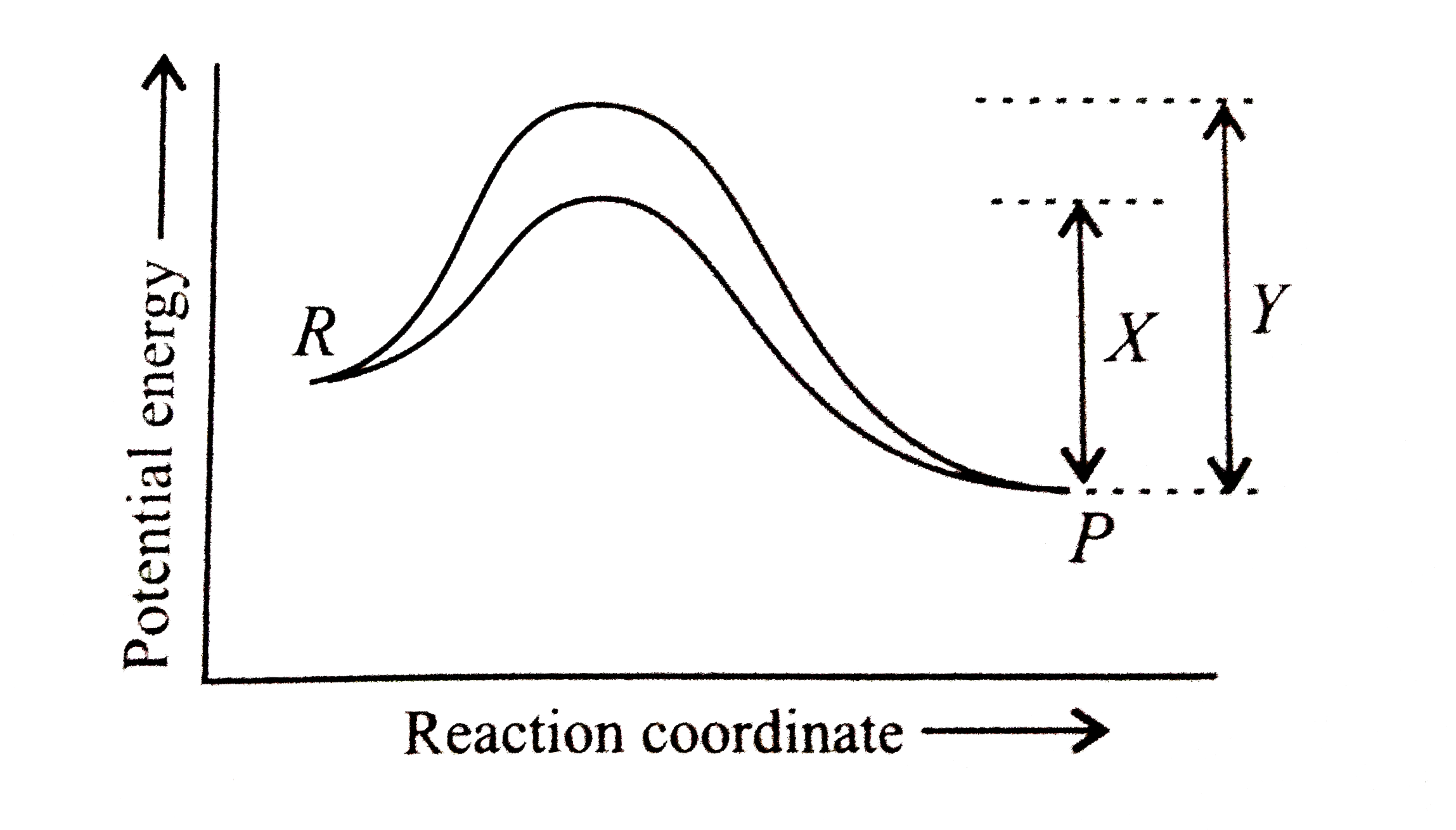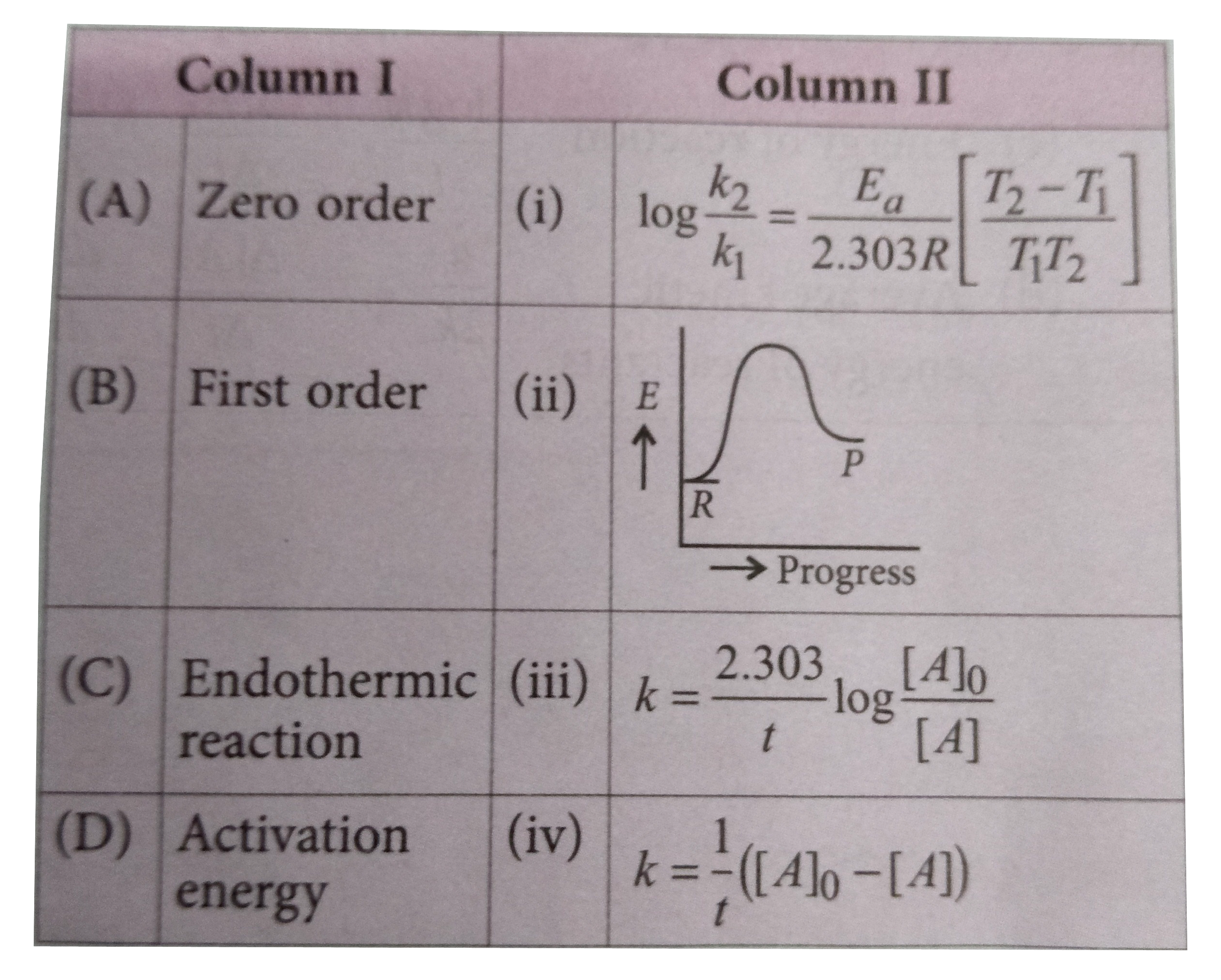Complete Solutions to Temperature Dependendence Of The Rate Of A Reaction of chapter CHEMICAL KINETICS of Class 12 book with complete answers and questions
| Class 12 | CHEMISTRY |
| Chapter | CHEMICAL KINETICS |
| NCERT FINGERTIPS | Temperature Dependendence Of The Rate Of A Reaction |
| Number Of Questions | 17 |
| Academic Year | 2023-24 |
The Activation energy for a chemical reaction mainly depends upon
View SolutionThe temperature dependence of the rate of a chemical reaction can be explained by Arrhenius equaiton which is
View SolutionThe energy diagram of a reaction `P + Q to R + S`
is given. What are A and B in the graphs?

View SolutionThe potential energy diagram for a reaction `X to Y` is given. A and C in the graph corresponding to

View SolutionAn endothermic reaction with high activation energy for the forward reaction is given by the diagram
View SolutionFor an endothermic reaction, where `Delta H` represents the enthalpy of reaction in `kJ mol^(-1)`, the minimum value for the energy of activation will be
View SolutionIf hydrogen and oxygen are mixed and kept in the same vessel at room temperature, the reaction does not take place to form water because
View SolutionThe temperature dependence of the rate of a chemical reaction is given by arrhenius equation, `k = Ae^(-Ea//RT)`. Which of the following graphs will be a striaght line?
View SolutionThe temperature dependence of the rate constant k is expressed as `k = Ae^(-Ea//RT)`
When a plot between logk and 1/T is plotted we get the graph as shown.

What is the value of slopw in the graph?
View SolutionWhich of the following statements is not correct?
View SolutionThe decomposition of hydrocarbon follows the equation `k=(4.5xx10^(11)s^(-1))e^(-28000K//T)`
Calculate `E_(a)`.
View SolutionThe rate constant for a first order reaction at `300^(@)C` for which `E_(a)` is 35 kcal `mol^(-1)` and frequency constant is `1.45 xx 10^(11) s^(-1)` is
View SolutionThe graph of the effect of catalyst on activation energy is given below. Fill up the blanks X and Y with appropriate statements

View SolutionMatch the column I with column II and mark the appropriate choice.

View SolutionWhich of the following statement about the catalyst is/are true?
View SolutionWhen a catalyst is used an equilibrium process,
View SolutionWhich of the following factors are responsible for the increase in the rate of a surface catalysed reaction?
(i) A catalyst provides proper orientation for the reactant molecules to react.
(ii) heat of adsorption of reactants on a catalyst helps reactant molecules to overcome activation energy.
(iii) The catalyst increases the activation energy of the reactio.
View Solution
Temperature Dependendence Of The Rate Of A Reaction questions and complete solutions for chapter CHEMICAL KINETICS of MTG CHEMISTRY (ENGLISH) of Class 12